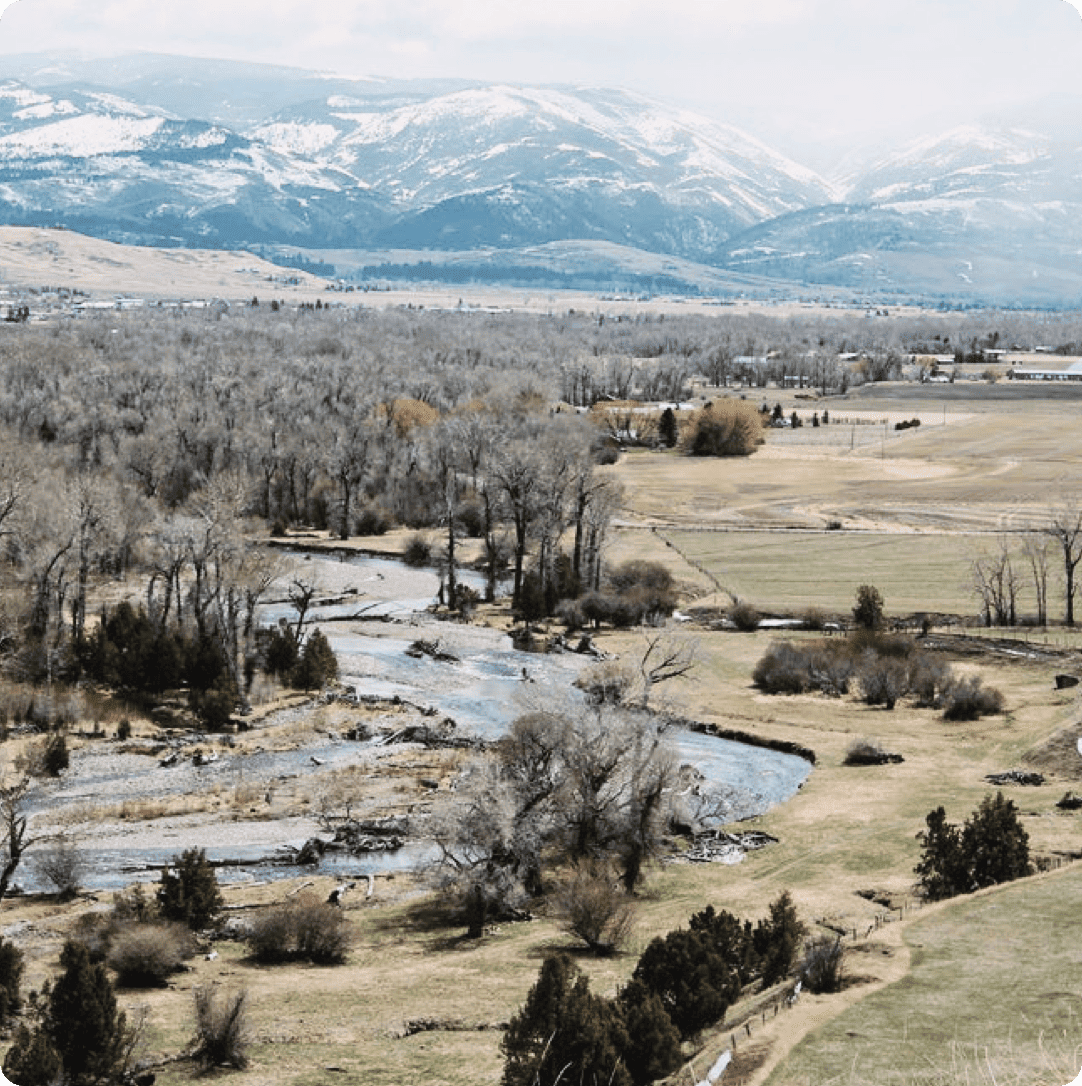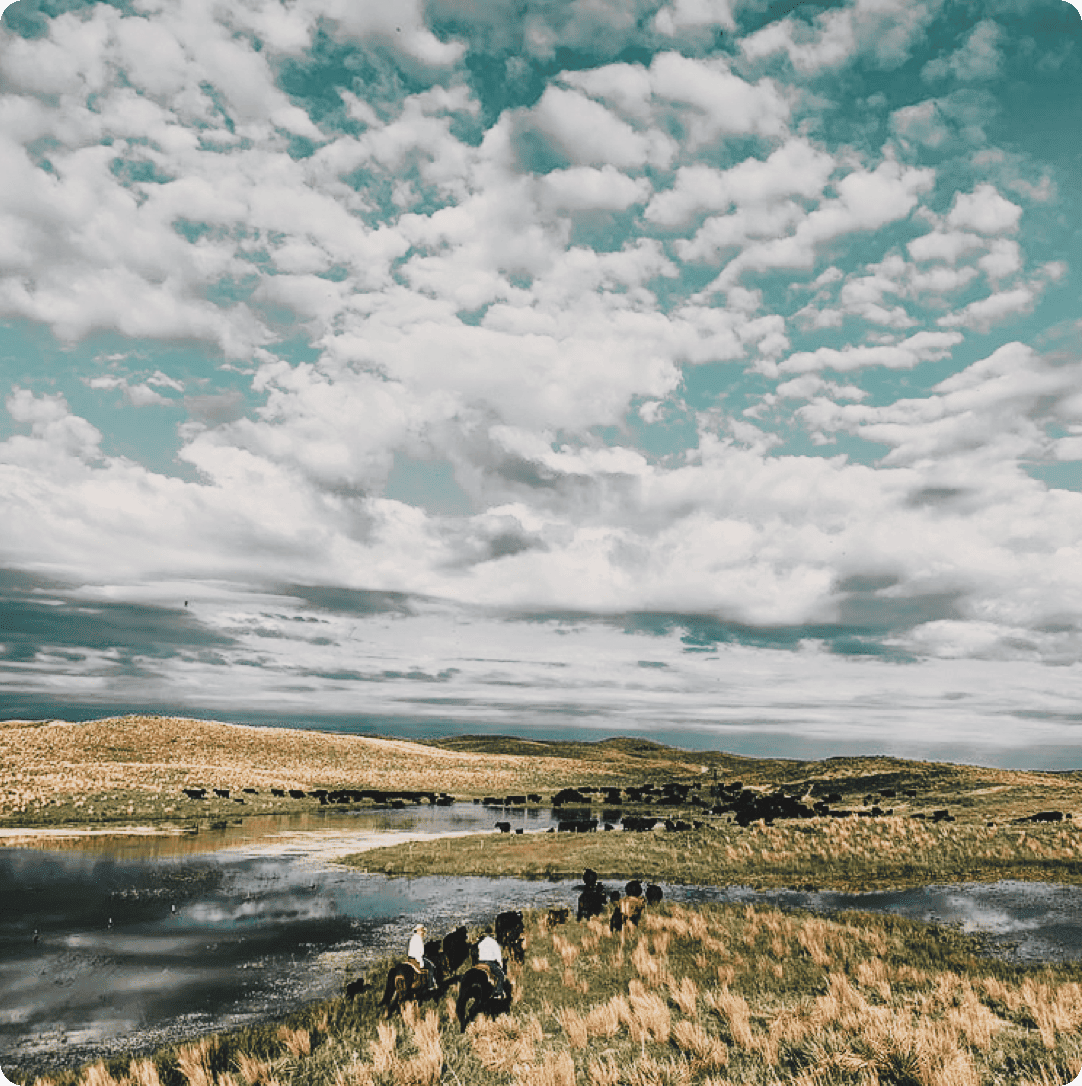Book your next North Dakota Whitetail hunt with LandTrust, the best way to hunt private land.
Find your next North Dakota Whitetail hunt by Unit.
Unit 2E
Although there are several small public access areas, the majority of this unit is made up of private land. Hunters aiming for a mature buck should invest time before the season to identify which private properties permit hunting. With much of the surrounding land being open but offering ample food and water, even the smallest areas of cover will attract deer. While tree cover is limited in this unit, the landscape is filled with land breaks and ravines that offer ideal hiding spots for whitetails.
Unit 3A3
Unit 3A3 is a large area with diverse terrain, much of which is privately owned. While there are some 400+ acre State Trust Lands and PLOTS that support whitetail populations, your best chances for success will likely come from gaining access to private land. The southwest section of the unit, as well as the western portion between Kenmare and Minot, offer prime hunting opportunities, especially for those looking for a trophy buck. With abundant water sources, tree cover, and high-quality croplands, these areas are particularly favorable for deer.
Unit 3A1
Unit 3A1 offers a greater variety of terrain than many other GMAs in northern North Dakota. In addition to the usual rolling hills, rocky soils, creek bottoms, and small lakes, this unit also includes steep inclines and significant elevation changes. Notably, areas east of Tioga and along the White Earth River feature hillsides where the elevation can drop or rise by 300 feet over just a few hundred yards. The unit is home to healthy deer populations, with whitetail being more abundant, though there are also excellent opportunities to hunt mule deer.
Unit 2K2
Unit 2K2 offers plenty of public access and a favorable mix of creeks, wetlands, and croplands, making it an excellent option for DIY whitetail hunters. The same opportunities exist on private land for those who prefer hunting in more exclusive areas, and this unit is known for maintaining a healthy whitetail population. However, one challenge in this unit is the lack of dense cover—there are few areas with thick native tree groves that provide shelter for deer.
Unit 4A
Drawing a tag for Unit 4A offers outstanding opportunities for whitetail deer hunting. Most of the unit consists of rugged badlands, with steep, narrow canyons and densely wooded creek bottoms. The Little Missouri River flows through the heart of the unit, supporting a lush deciduous forest along its banks. If you can find a prime hunting location near Theodore Roosevelt National Park and patiently wait for a deer to venture off the park’s land and onto huntable property, you may have a chance at a Boone & Crockett trophy.
Unit 2J1
Although this unit is best known as a waterfowl hotspot, it also offers several areas for deer hunting. Creeks, wetlands, and croplands provide solid opportunities for the DIY whitetail hunter. However, one challenge is the lack of dense tree cover, as few areas have thick groves of native trees. The Old Johns Lake Wildlife Management Area is located in the north-central part of the unit, and the McClusky Canal runs through the area. On both sides of the canal, rows of planted trees offer cover and bedding areas for whitetails. Hunters who are willing to put in the extra effort to explore the unit's hidden spots will improve their chances of success.
Unit 3D2
If you've drawn a tag for Unit 3D2, you'll have access to a variety of State Trust Lands and PLOTS properties. The northern section of the unit, particularly the northwest corner, is rugged and characterized by numerous small draws and limited road access. While the unit offers excellent hunting opportunities overall, the public access areas are generally smaller and more dispersed. Success in the area is often enhanced by securing private land, especially near creeks and ridges. Whitetail deer are widespread throughout the unit, with concentrations around creeks, rivers, and adjacent crop fields.
Unit 2F2
Located on the eastern side of the state, Unit 2F2 is part of the Sheyenne-James region, which is known for its excellent whitetail habitat. The Jamestown River runs along the western edge of the unit, and the landscape is dotted with lakes and ponds. These features create ideal conditions for deer, offering a mix of cover, food, and water. To harvest a large deer in this unit, you'll likely need to either have access to private land through a landowner, be skilled at asking for hunting permission, or be prepared to pay for access to private property.
Unit 2I
This unit is primarily composed of agricultural farmland, and while there is a healthy deer population, public land access is limited. Two distinctive moraines—Altamont Moraine on the west side and Streeter Moraine on the east—offer a unique hunting experience. These areas feature broken terrain that provides ideal habitat for whitetail deer. Although tree cover is scarce, the rolling hills and uneven landscape create plenty of hiding spots for deer. Long Lake Creek flows through Altamont Moraine, offering riparian habitat that attracts deer. With strong deer herds and populations, hunters who have access to the right land—whether public or private—can expect a rewarding hunt.
Unit 2C
Located in the far northeastern corner of the state, Unit 2C is predominantly made up of private farmland. The area's agricultural landscape includes crops like corn, soybeans, and sugar beets, all of which provide ample nutrition for deer. The Red River of the North forms the eastern boundary, while the Middle Branch of the Forest River runs through the center, bringing with it wooded areas and land breaks that create ideal conditions for growing large deer.
Unit 2L
Unit 2L is situated in central North Dakota and includes the expansive Devils Lake system. The unit offers a diverse range of habitats and terrain, creating ideal conditions for supporting healthy deer populations. The main challenge, however, is the limited availability of public land access. That said, hunters who can secure permission to hunt on private property will find strong potential for a successful hunt in this area.
Unit 4C
Unit 4C is one of the top units in North Dakota for drawing a whitetail deer tag. The eastern boundary of the unit, along Highway 85, is mostly made up of private land. To the north and west, the Little Missouri River forms the borders of the unit. A large portion of the area is part of Little Missouri National Grassland, offering thousands of acres of public land for hunting. It’s a good idea to study maps of the unit to identify potential hunting spots and scout them ahead of the season if possible. With strong deer populations throughout, dedicated hunters can find success and have the opportunity to take some impressive bucks.
Unit 2K1
Located in North Dakota's Northern Coteau region, Unit 2K1 is known for its numerous coulees and pothole ponds, making it a prime nesting area for waterfowl. The northern part of the unit includes drainages and coulees that are fed by the Souris River. While the river itself lies in a different deer unit, its influence extends into Unit 2K1. The terrain varies significantly across the unit, with steep ridges and the Prophets Mountains adding elevation changes. Securing landowner permission to hunt the coulees along the Souris River could provide one of the best opportunities for harvesting a mature whitetail buck in this area.
Unit 4F
This unit lies within North Dakota's Badlands region, known for its dramatic buttes and steep draws. While the terrain here is generally less rugged than the northern units, it still offers plenty of forested creek bottoms and draws that attract deer. Big Gumbo Creek branches off the Little Missouri River and flows toward Montana, creating a fertile creek bottom with numerous watering holes ideal for whitetails. If you have the opportunity, this area is worth exploring. The unit supports healthy deer populations, and hunters typically find success throughout the hunting season.
Unit 2G1
Like many of the nearby units, Unit 2G1 is primarily composed of cultivated cropland, offering abundant food sources for the whitetail population. However, this unit stands out for having more public land than most surrounding areas, and much of it is not farmed. Instead, it consists of gentle grasslands that are easy to navigate. The unit also features both the Sheyenne and James Rivers, which create the river-bottom habitat that whitetails favor. Hunters using tree stands could find success in this area, which is mostly flat or gently rolling, with some terrain breaks along the rivers.
Unit 3B1
Unit 3B1 offers several prime hunting areas for whitetail deer, particularly to the north and south of the Missouri River, where the terrain can be quite challenging. The creek bottoms near the river are mostly covered in dense cottonwood groves, with scattered ash and willow trees. While you may come across some patches of evergreens, cottonwoods dominate the landscape in this unit. The Missouri River runs from west to east through the unit, eventually flowing into Lake Sakakawea at the eastern boundary.
Unit 3A4
Unit 3A4 offers a mix of farmland, pothole ponds, lakes, creek bottoms, and dense deciduous forests, providing diverse hunting opportunities. The landscape is mostly flat with some rolling hills, and much of the land is privately owned. The unit supports healthy deer populations, and hunters will have good prospects if they can access public land or secure permission from landowners. In fact, many landowners are open to hosting hunters with antlerless tags, as some areas face deer overpopulation that has led to crop damage.
Unit 2D
Unit 2D, located in the far northeastern corner of the state, offers a diverse landscape. The Pembina River and its tributaries carve through steep, forested canyons, with elevation dropping from around 1,500 feet to 1,000 feet before rising again. This creates a mix of rugged terrain and wooded areas. The unit also features large stretches of relatively flat, forested land, and much of the agricultural land is privately owned. If you're planning to hunt around the Pembina River canyons, be prepared for challenging terrain and ensure you're in good physical condition, as the area can be quite rugged.
Unit 2J2
Located in the Southern Coteau region, Unit 2J2 is mostly recognized for its excellent waterfowl hunting. While there are no large public land areas in the unit, there are several smaller plots that, along with creeks, wetlands, and croplands, offer promising opportunities for the DIY whitetail hunter. These areas are often bordered by croplands that provide abundant food for deer, but also make them more exposed as they move between feeding and cover. The unit is predominantly made up of private farmland throughout.
Discover More
- North Dakota Partridge Hunting Units
- North Dakota Turkey Hunting Units
- North Dakota Antelope Hunting Units
- North Dakota Elk Hunting Units
- North Dakota Duck Hunting Units
- North Dakota Pheasant Hunting Units
- North Dakota Waterfowl Hunting Units
- North Dakota Mule Deer Hunting Units
- North Dakota Grouse Hunting Units
- North Dakota Moose Hunting Units
- North Dakota Whitetail Unit 2E
- North Dakota Whitetail Unit 3A3
- North Dakota Whitetail Unit 3E1
- North Dakota Whitetail Unit 3A1
- North Dakota Whitetail Unit 3E2
- North Dakota Whitetail Unit 2C
- North Dakota Whitetail Unit 2J1
- North Dakota Whitetail Unit 2K2
- North Dakota Whitetail Unit 4A
- North Dakota Whitetail Unit Low Plains
- North Dakota Whitetail Unit 2D
- North Dakota Whitetail Unit 2F2
- North Dakota Whitetail Unit 2G1
- North Dakota Whitetail Unit 2I
- North Dakota Whitetail Unit 2K1
- North Dakota Whitetail Unit 2L
- North Dakota Whitetail Unit 3A4
- North Dakota Whitetail Unit 3B1
- North Dakota Whitetail Unit 3D2
- North Dakota Whitetail Unit 4C
- North Dakota Whitetail Unit 4F
- North Dakota Whitetail Unit 2J2

